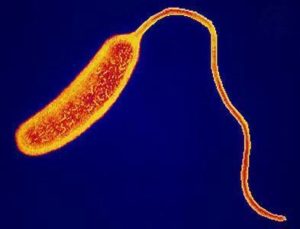 They are the unwelcome comeback kids: Measles, mumps and other old-time diseases that were once nearly extinct are on the rise in suburban communities as well as developing nations.
They are the unwelcome comeback kids: Measles, mumps and other old-time diseases that were once nearly extinct are on the rise in suburban communities as well as developing nations.
In order to better understand the evolution of these microbial menaces, researchers at the Wellcome Sanger Institute and Public Health England have been sequencing historical samples deposited in the UK’s National Collection of Type Cultures (NCTC).
The latest is a strain of cholera-causing bacteria (Vibrio cholerae) extracted in 1916 from the stool of a British soldier who was convalescing in Egypt. Researchers at the Sanger Institute revived the WWI soldier’s bacteria – thought to be the oldest publicly-available V. cholerae sample – and sequenced its entire genome using SMRT Sequencing. They also conducted pan-genome and phylogenetic analyses, which included 197 V. cholerae genome sequences and sequences from a handful of related Vibrio species
There were a few surprises. First, the strain (dubbed NCTC 30) was found to be non-toxic. This may explain why so few soldiers in the British Expeditionary Forces became ill with debilitating diarrhoea between 1914 and 1918, despite being in the midst of the world’s sixth global cholera pandemic.
Secondly, NCTC 30 was found to harbour a functional b-lactamase antibiotic resistance gene — even though it was collected before the introduction of penicillin-based antibiotics.
“This adds to increasing evidence that genes for antibiotic resistance in bacteria existed before the introduction of antibiotic treatments, possibly because the bacteria needed them to protect against naturally-occurring antibiotics,” said first author Nick Thomson of Wellcome Sanger Institute.
Although NCTC 30 differs from the current ‘El Tor’ biotype that still inflicts millions worldwide in a pandemic that began in 1961, Thomson said it is important to study strains from different points in time in order to better understand the evolution of the disease.
“Even though this isolate did not cause an outbreak it is important to study those that do not cause disease as well as those that do,” Thomson said. “These findings illustrate the rich history, as well as biological insights, that can be garnered from the study of bacterial pathogens.”
Additional research from the NCTC will be presented at the annual meeting of the American Society for Microbiology (ASM 2019, June 20-24). Additional research from the NCTC will be presented at the annual meeting of the American Society for Microbiology (ASM 2019, June 20-24). Be sure to stop by the PacBio booth (#1160) as well, to learn about microbial whole genome sequencing and high definition metagenomics with HiFi reads on the new Sequel II System.
May 7, 2019 | Microbial sequencing methods